
Colour related aesthetics: colour, fill, and alpha
Source:R/aes-colour-fill-alpha.R
aes_colour_fill_alpha.RdThese aesthetics parameters change the colour (colour and fill) and the
opacity (alpha) of geom elements on a plot. Almost every geom has either
colour or fill (or both), as well as can have their alpha modified.
Modifying colour on a plot is a useful way to enhance the presentation of data,
often especially when a plot graphs more than two variables.
Colour and fill
The colour aesthetic is used to draw lines and strokes, such as in
geom_point() and geom_line(), but also the line contours of
geom_rect() and geom_polygon(). The fill aesthetic is used to
colour the inside areas of geoms, such as geom_rect() and
geom_polygon(), but also the insides of shapes 21-25 of geom_point().
Colours and fills can be specified in the following ways:
A name, e.g.,
"red". R has 657 built-in named colours, which can be listed withgrDevices::colors().An rgb specification, with a string of the form
"#RRGGBB"where each of the pairsRR,GG,BBconsists of two hexadecimal digits giving a value in the range00toFF. You can optionally make the colour transparent by using the form"#RRGGBBAA".An
NA, for a completely transparent colour.
Alpha
Alpha refers to the opacity of a geom. Values of alpha range from 0 to 1,
with lower values corresponding to more transparent colors.
Alpha can additionally be modified through the colour or fill aesthetic
if either aesthetic provides color values using an rgb specification
("#RRGGBBAA"), where AA refers to transparency values.
See also
Other options for modifying colour:
scale_colour_brewer(),scale_colour_gradient(),scale_colour_grey(),scale_colour_hue(),scale_colour_identity(),scale_colour_manual(),scale_colour_viridis_d()Other options for modifying fill:
scale_fill_brewer(),scale_fill_gradient(),scale_fill_grey(),scale_fill_hue(),scale_fill_identity(),scale_fill_manual(),scale_fill_viridis_d()Other options for modifying alpha:
scale_alpha(),scale_alpha_manual(),scale_alpha_identity()Run
vignette("ggplot2-specs")to see an overview of other aesthetics that can be modified.
Other aesthetics documentation:
aes_group_order,
aes_linetype_size_shape,
aes_position,
aes()
Examples
# \donttest{
# Bar chart example
p <- ggplot(mtcars, aes(factor(cyl)))
# Default plotting
p + geom_bar()
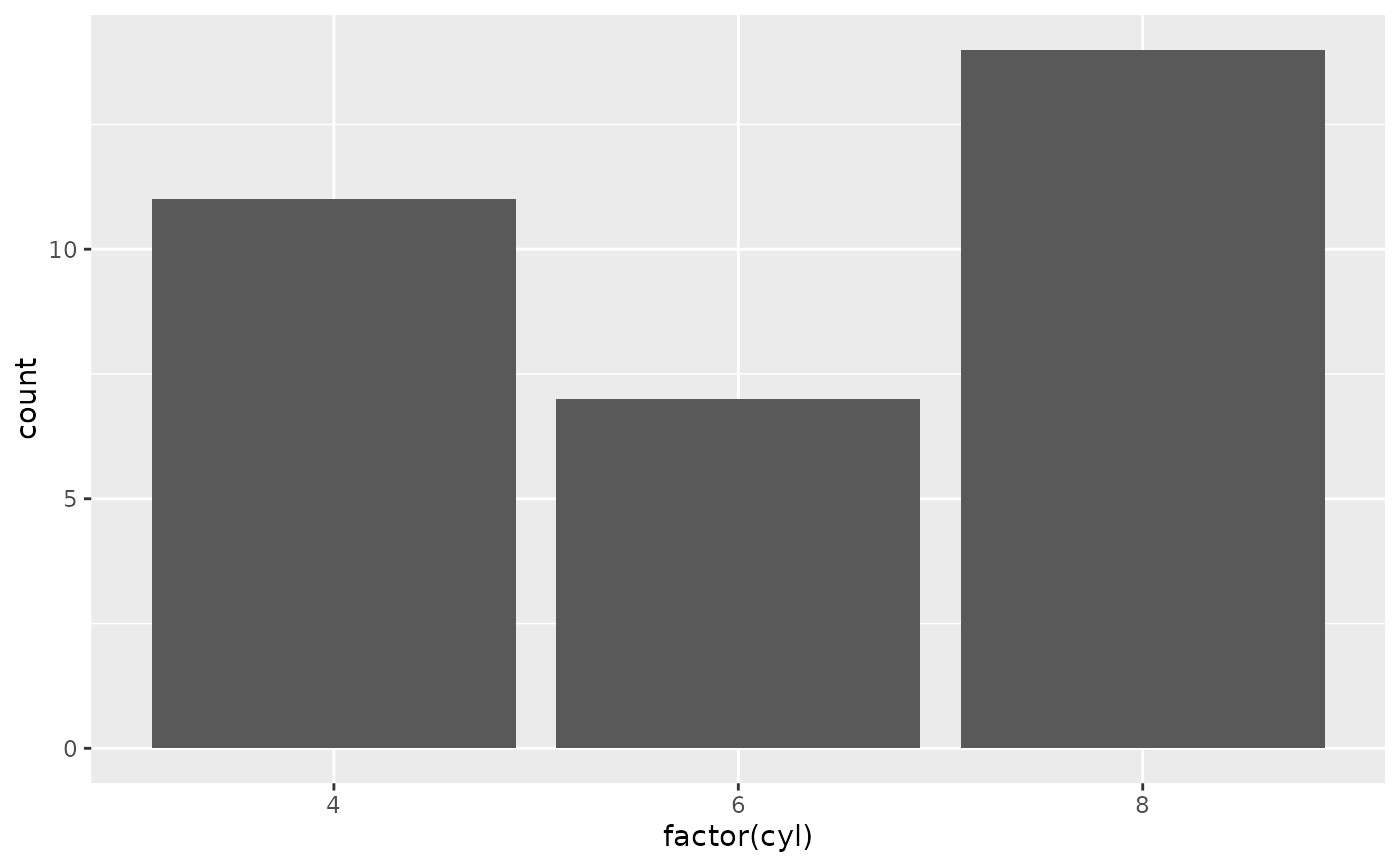 # To change the interior colouring use fill aesthetic
p + geom_bar(fill = "red")
# To change the interior colouring use fill aesthetic
p + geom_bar(fill = "red")
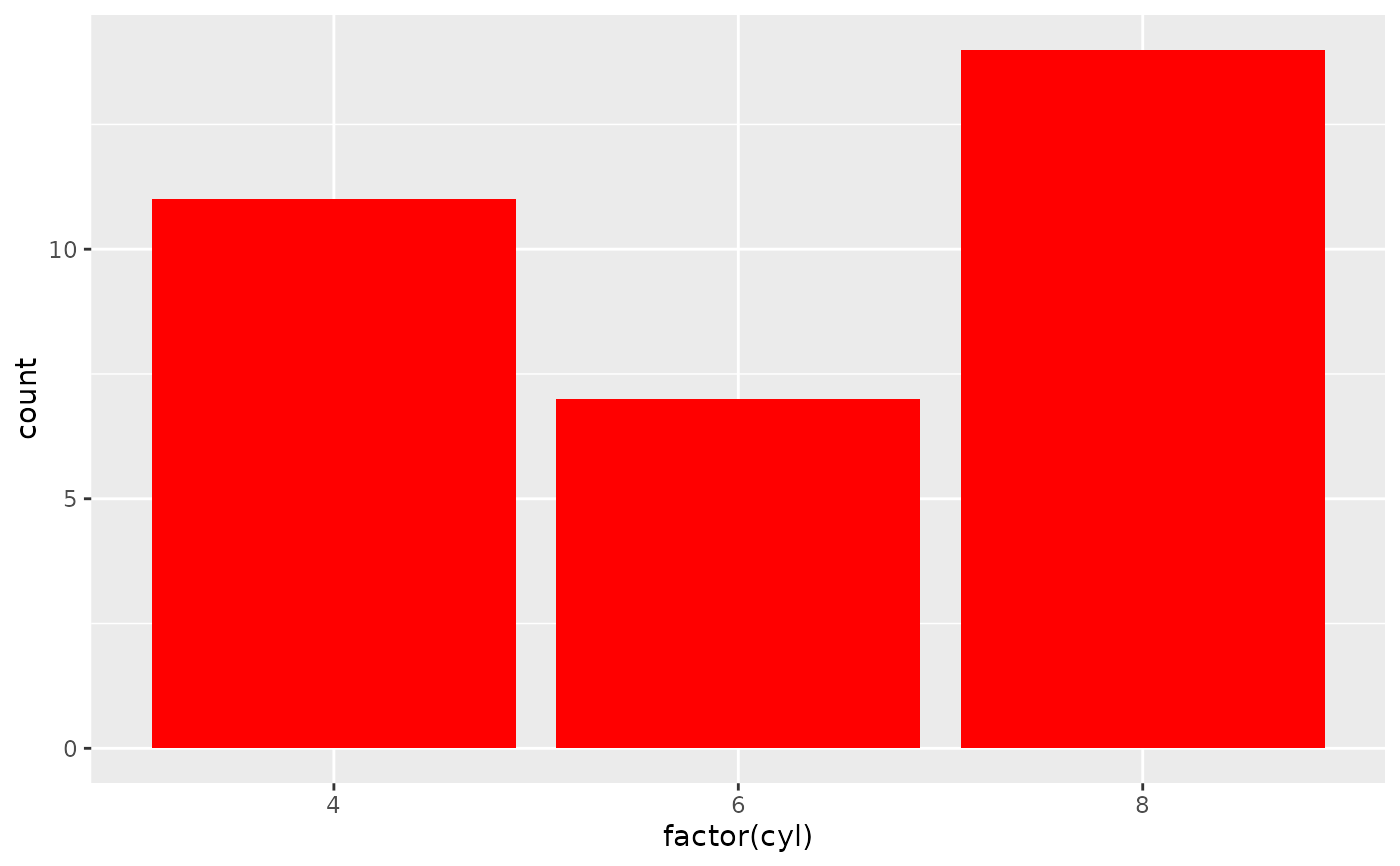 # Compare with the colour aesthetic which changes just the bar outline
p + geom_bar(colour = "red")
# Compare with the colour aesthetic which changes just the bar outline
p + geom_bar(colour = "red")
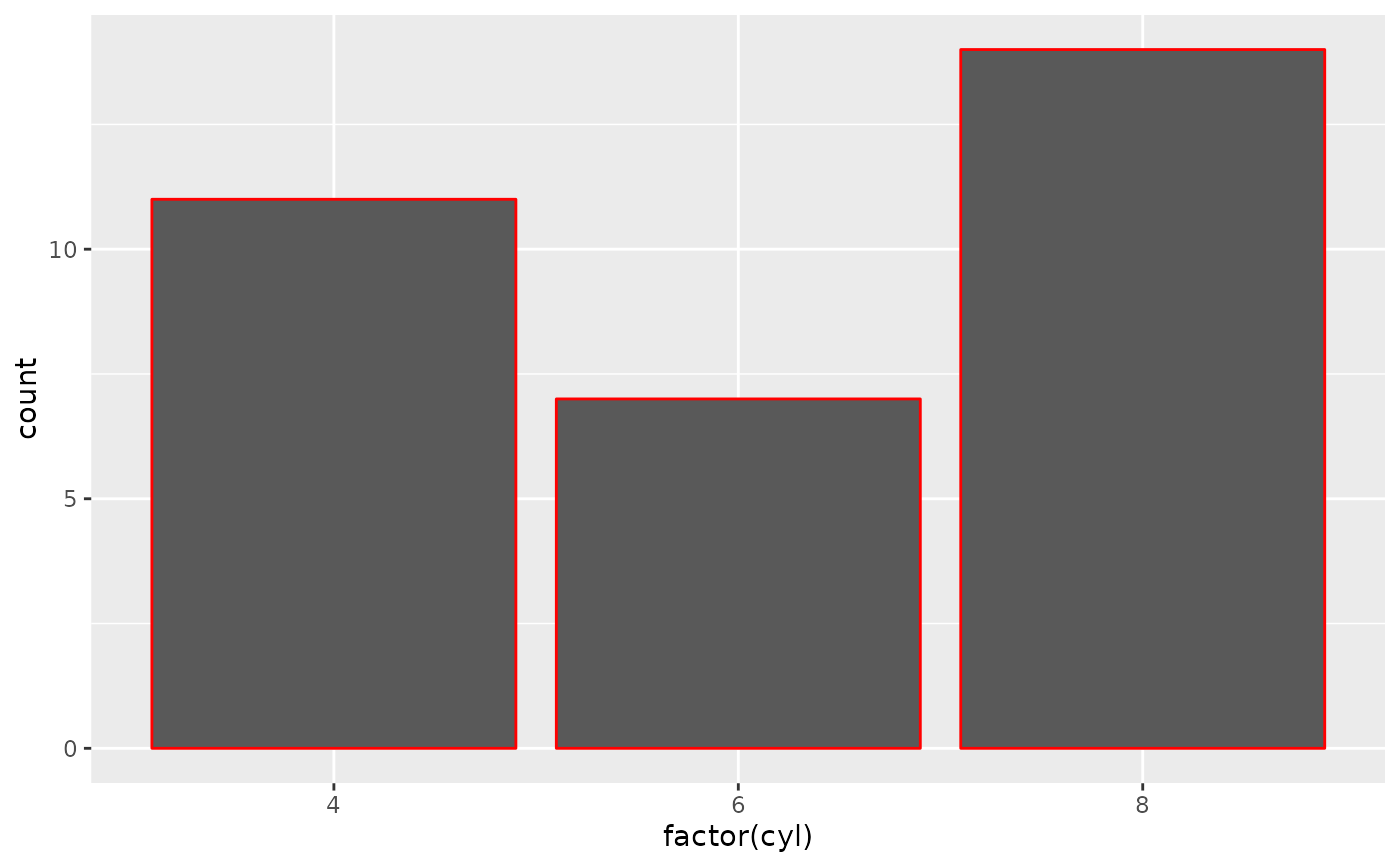 # Combining both, you can see the changes more clearly
p + geom_bar(fill = "white", colour = "red")
# Combining both, you can see the changes more clearly
p + geom_bar(fill = "white", colour = "red")
 # Both colour and fill can take an rgb specification.
p + geom_bar(fill = "#00abff")
# Both colour and fill can take an rgb specification.
p + geom_bar(fill = "#00abff")
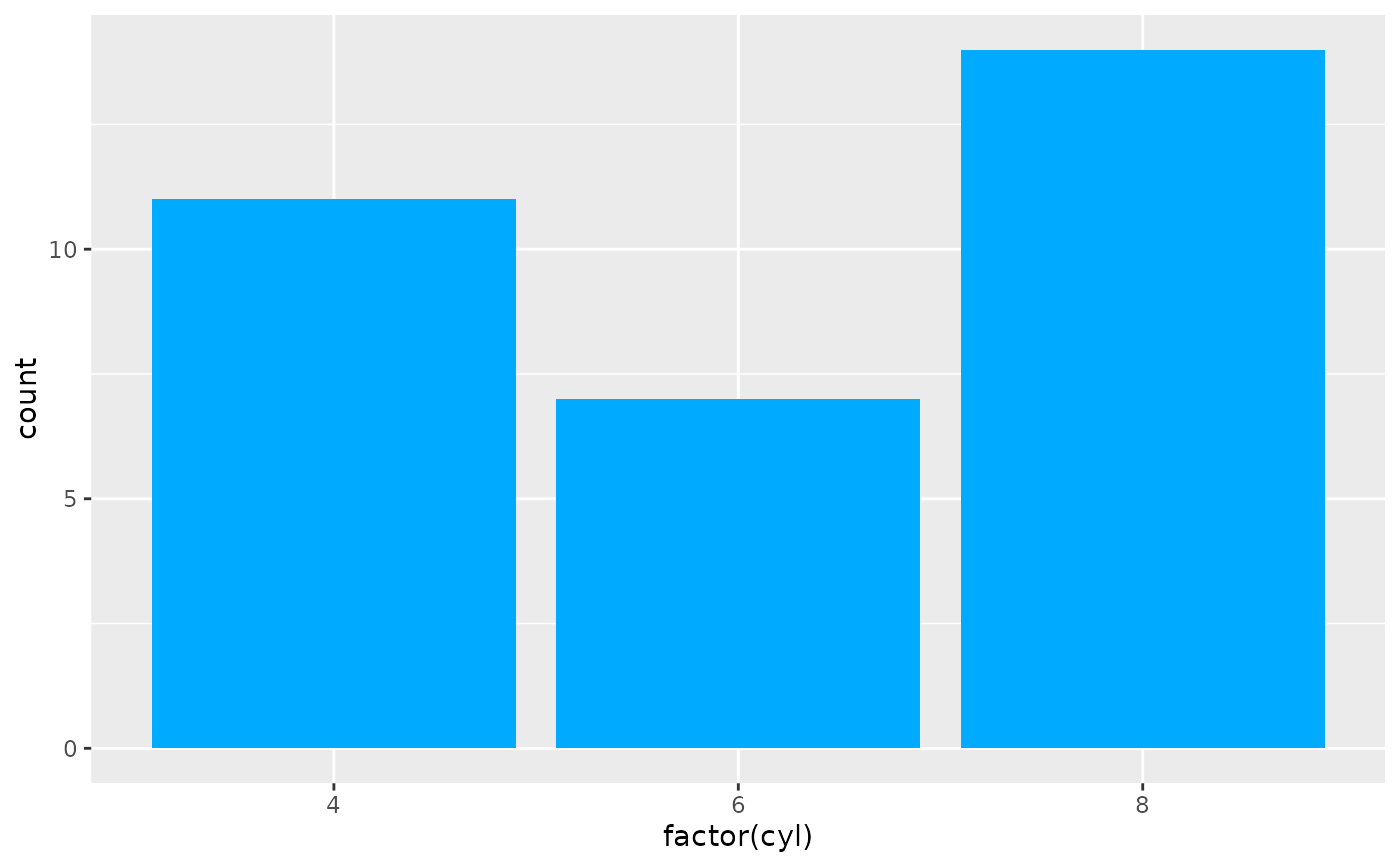 # Use NA for a completely transparent colour.
p + geom_bar(fill = NA, colour = "#00abff")
# Use NA for a completely transparent colour.
p + geom_bar(fill = NA, colour = "#00abff")
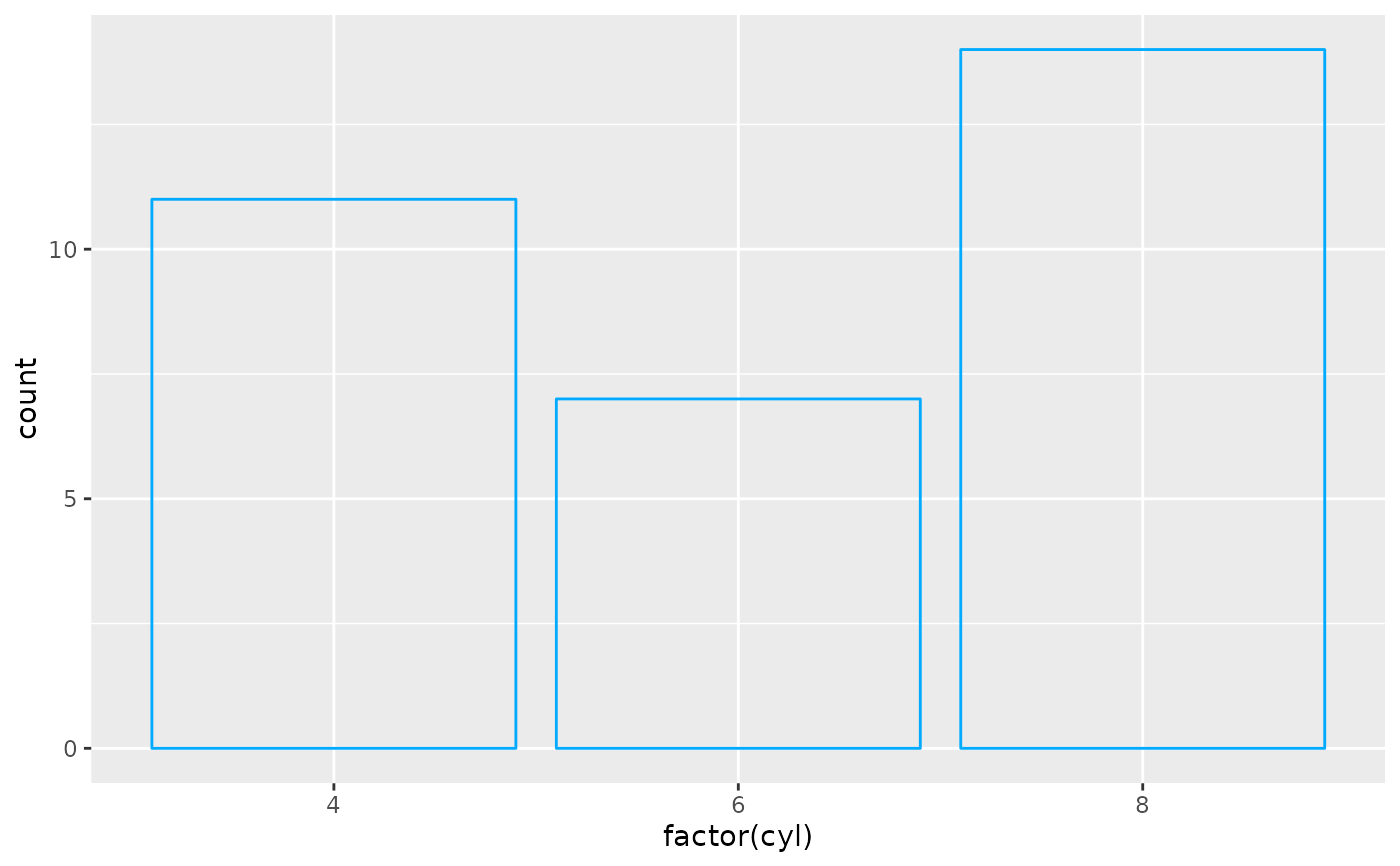 # Colouring scales differ depending on whether a discrete or
# continuous variable is being mapped. For example, when mapping
# fill to a factor variable, a discrete colour scale is used.
ggplot(mtcars, aes(factor(cyl), fill = factor(vs))) + geom_bar()
# Colouring scales differ depending on whether a discrete or
# continuous variable is being mapped. For example, when mapping
# fill to a factor variable, a discrete colour scale is used.
ggplot(mtcars, aes(factor(cyl), fill = factor(vs))) + geom_bar()
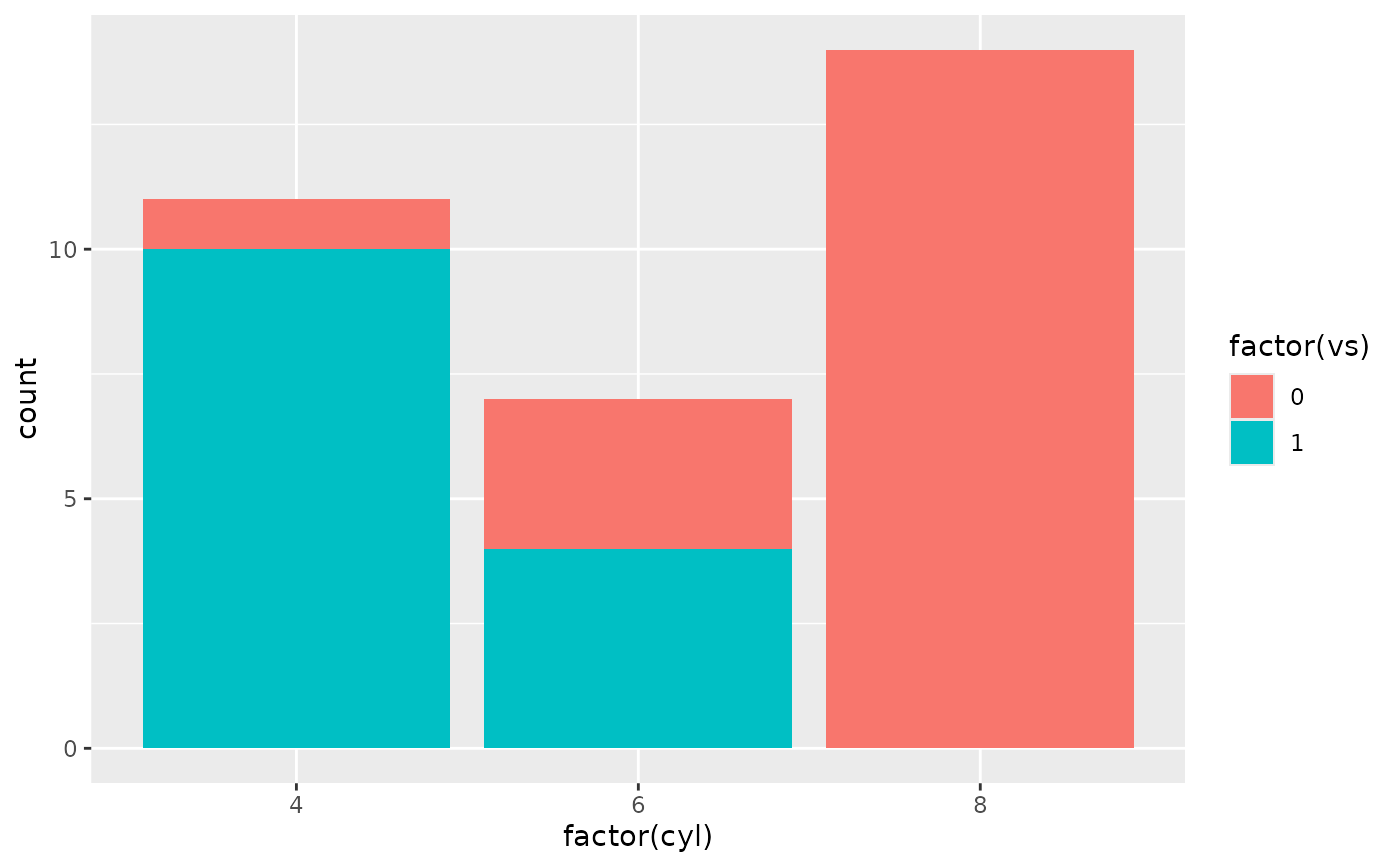 # When mapping fill to continuous variable a continuous colour
# scale is used.
ggplot(faithfuld, aes(waiting, eruptions)) +
geom_raster(aes(fill = density))
# When mapping fill to continuous variable a continuous colour
# scale is used.
ggplot(faithfuld, aes(waiting, eruptions)) +
geom_raster(aes(fill = density))
 # Some geoms only use the colour aesthetic but not the fill
# aesthetic (e.g. geom_point() or geom_line()).
p <- ggplot(economics, aes(x = date, y = unemploy))
p + geom_line()
# Some geoms only use the colour aesthetic but not the fill
# aesthetic (e.g. geom_point() or geom_line()).
p <- ggplot(economics, aes(x = date, y = unemploy))
p + geom_line()
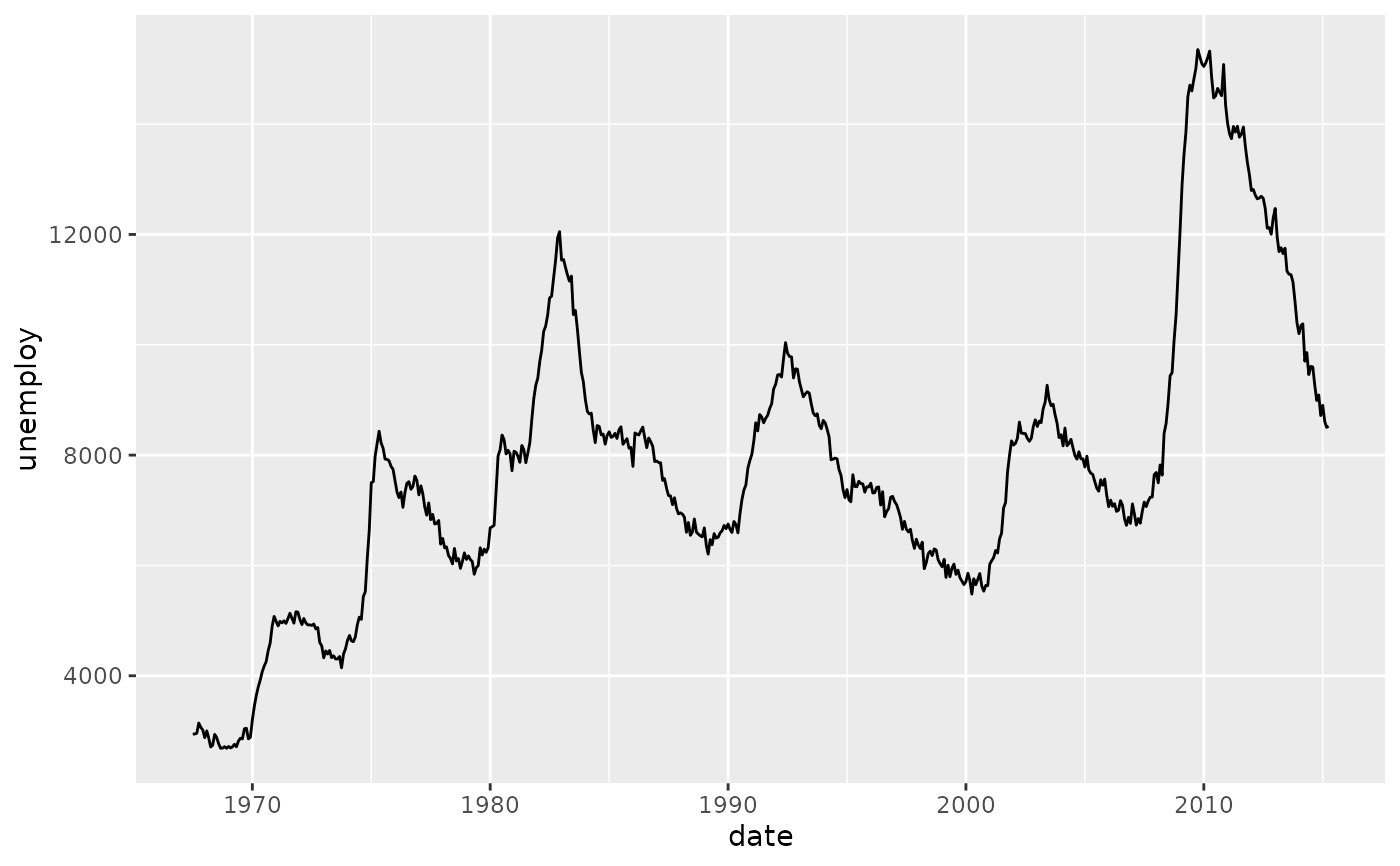 p + geom_line(colour = "green")
p + geom_line(colour = "green")
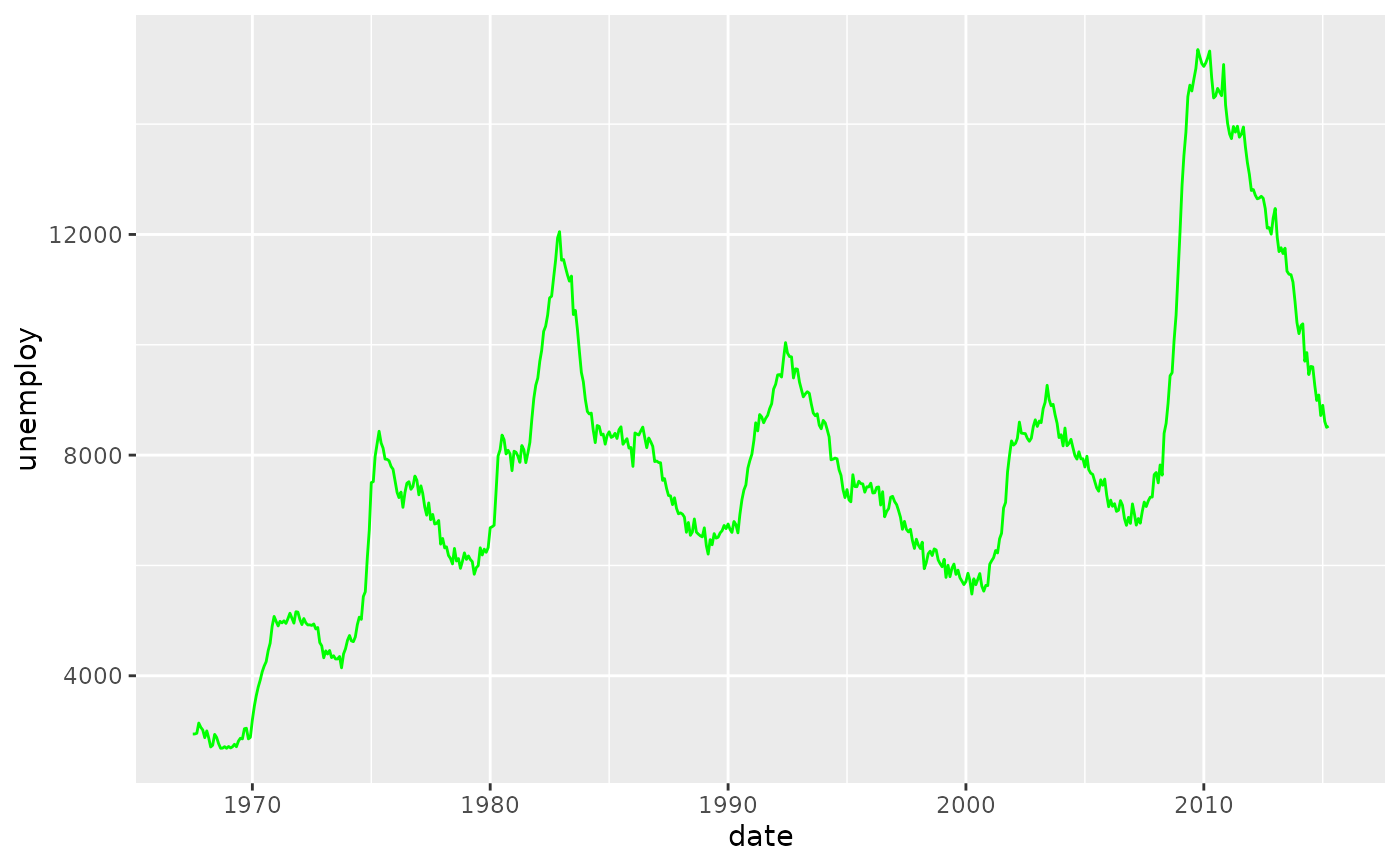 p + geom_point()
p + geom_point()
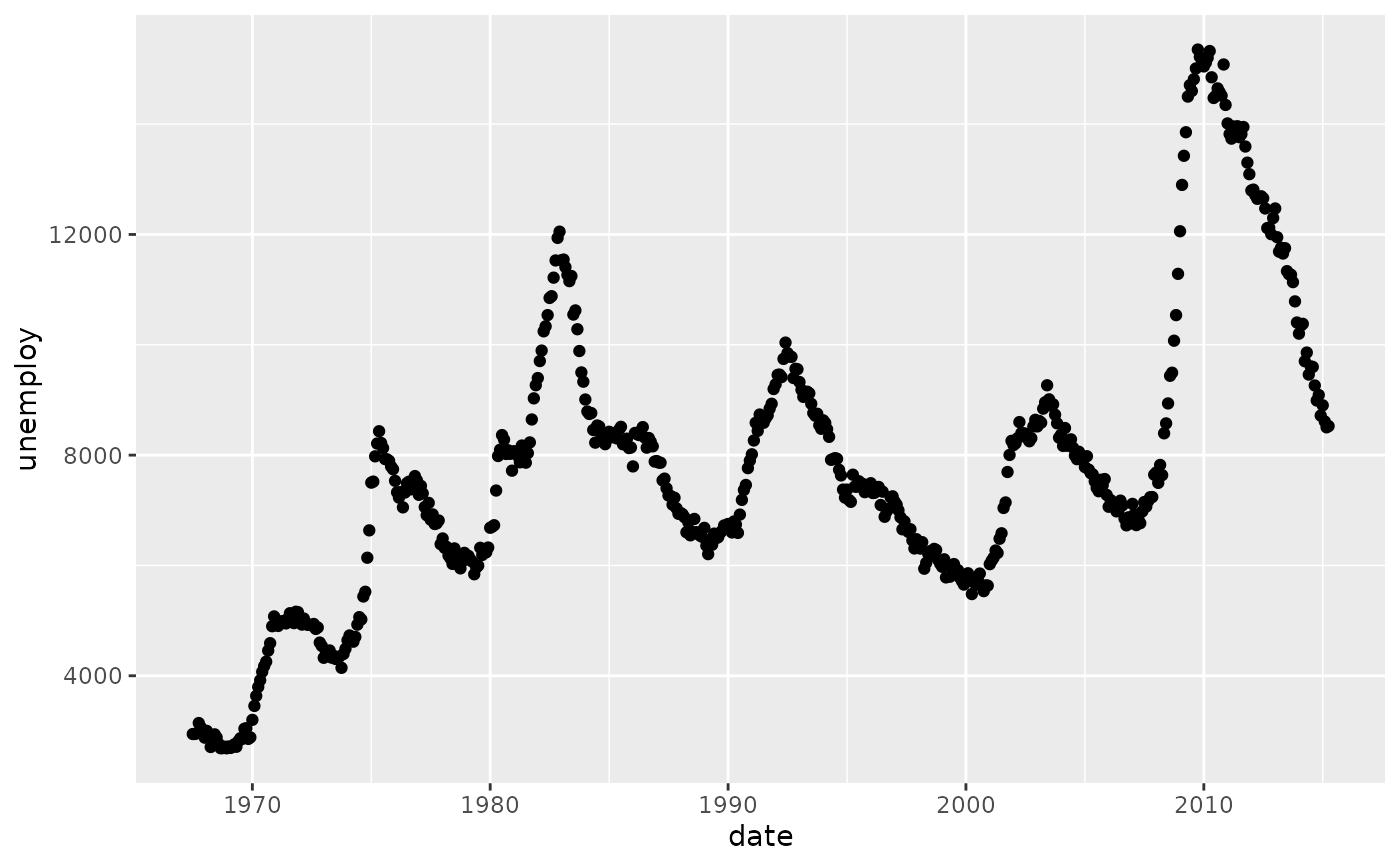 p + geom_point(colour = "red")
p + geom_point(colour = "red")
 # For large datasets with overplotting the alpha
# aesthetic will make the points more transparent.
set.seed(1)
df <- data.frame(x = rnorm(5000), y = rnorm(5000))
p <- ggplot(df, aes(x,y))
p + geom_point()
# For large datasets with overplotting the alpha
# aesthetic will make the points more transparent.
set.seed(1)
df <- data.frame(x = rnorm(5000), y = rnorm(5000))
p <- ggplot(df, aes(x,y))
p + geom_point()
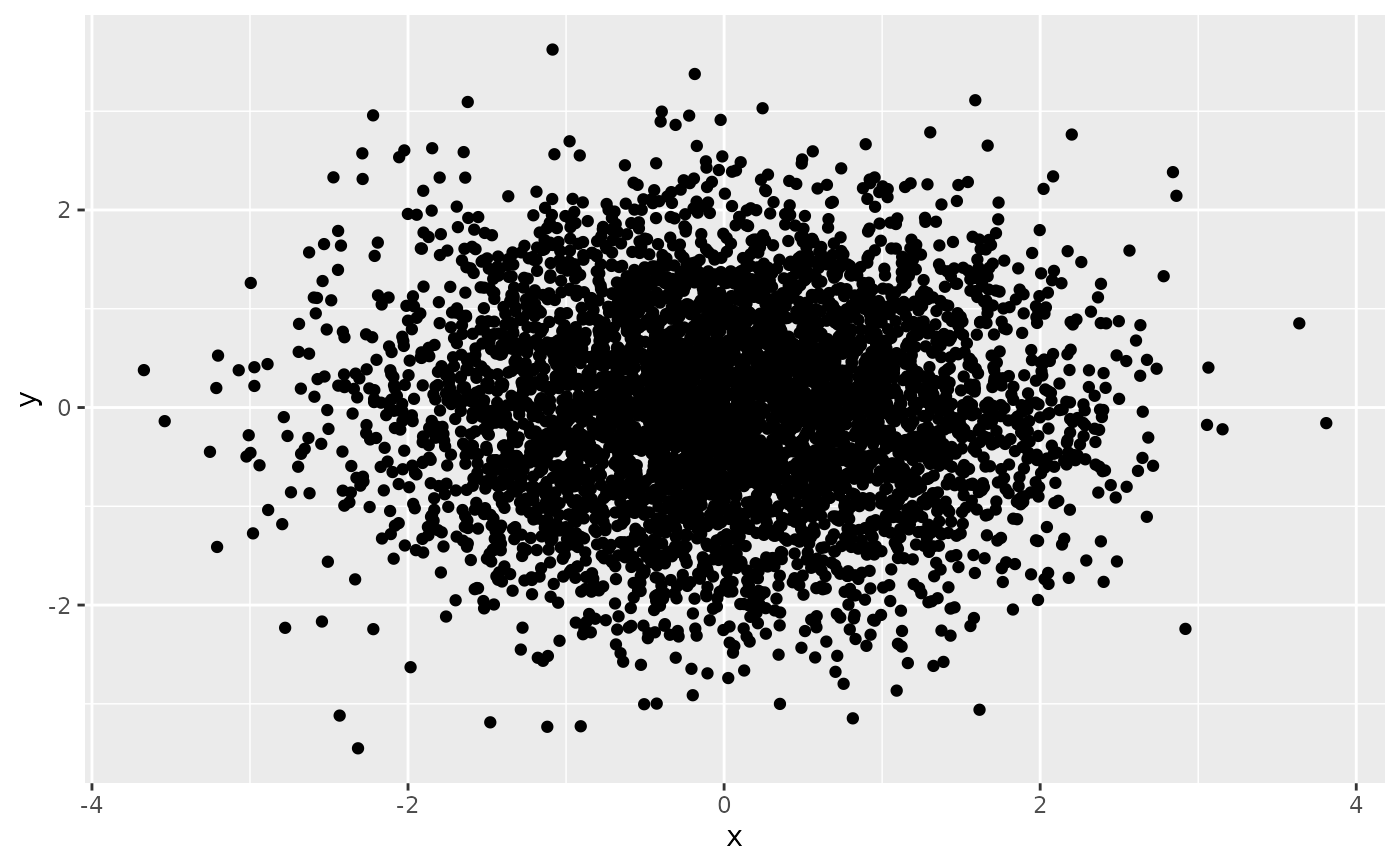 p + geom_point(alpha = 0.5)
p + geom_point(alpha = 0.5)
 p + geom_point(alpha = 1/10)
p + geom_point(alpha = 1/10)
 # Alpha can also be used to add shading.
p <- ggplot(economics, aes(x = date, y = unemploy)) + geom_line()
p
# Alpha can also be used to add shading.
p <- ggplot(economics, aes(x = date, y = unemploy)) + geom_line()
p
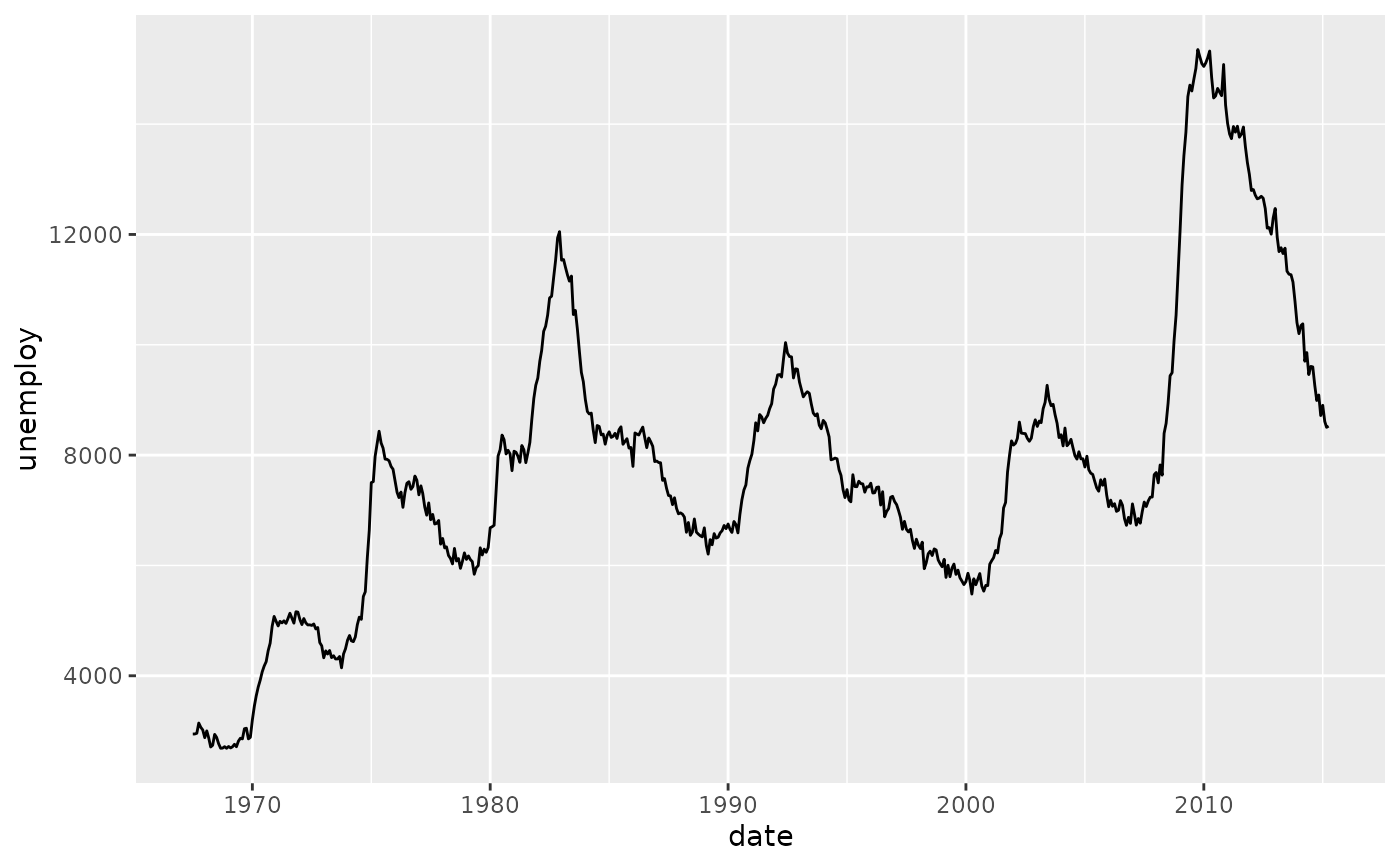 yrng <- range(economics$unemploy)
p <- p +
geom_rect(
aes(NULL, NULL, xmin = start, xmax = end, fill = party),
ymin = yrng[1], ymax = yrng[2], data = presidential
)
p
yrng <- range(economics$unemploy)
p <- p +
geom_rect(
aes(NULL, NULL, xmin = start, xmax = end, fill = party),
ymin = yrng[1], ymax = yrng[2], data = presidential
)
p
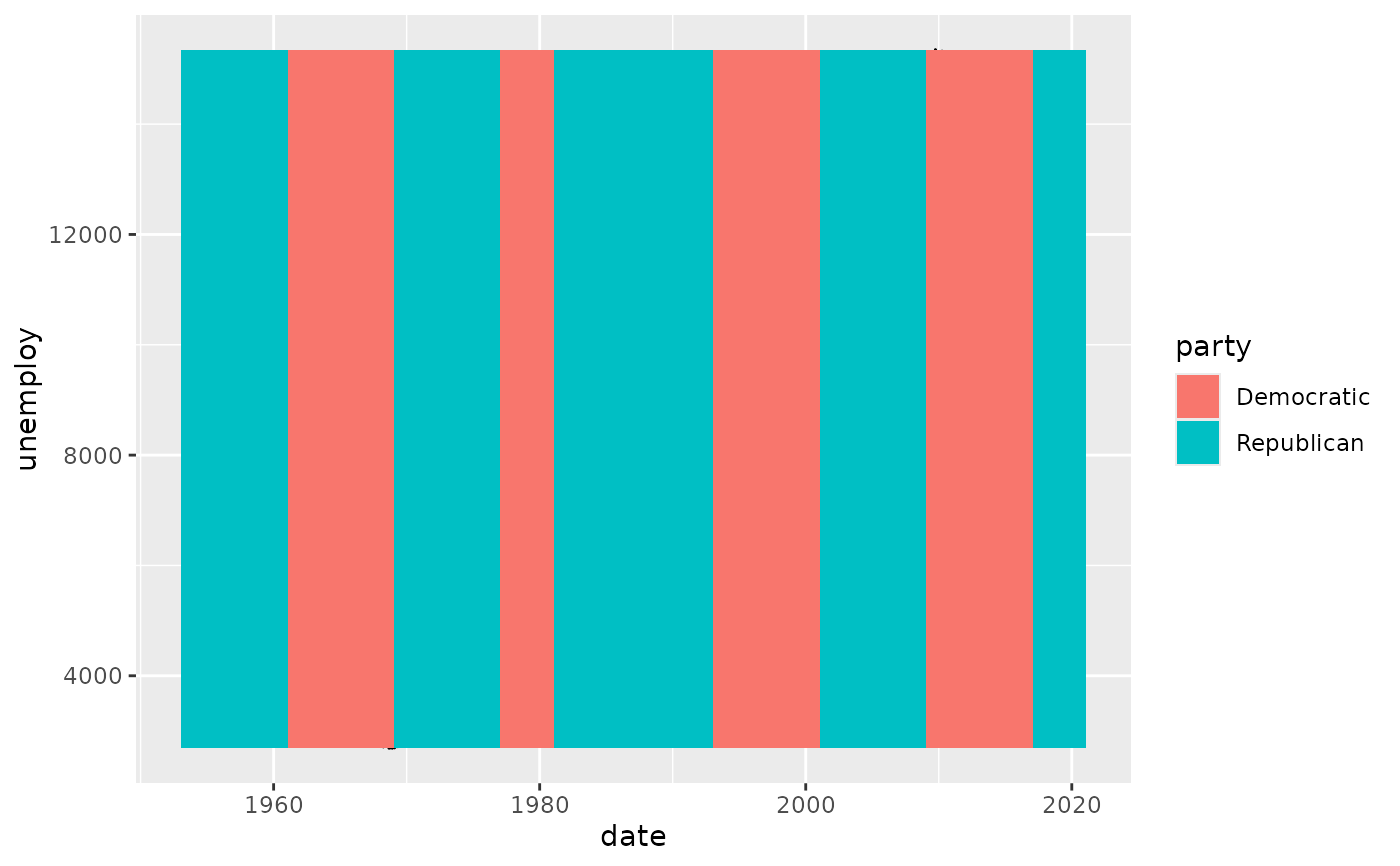 p + scale_fill_manual(values = alpha(c("blue", "red"), .3))
p + scale_fill_manual(values = alpha(c("blue", "red"), .3))
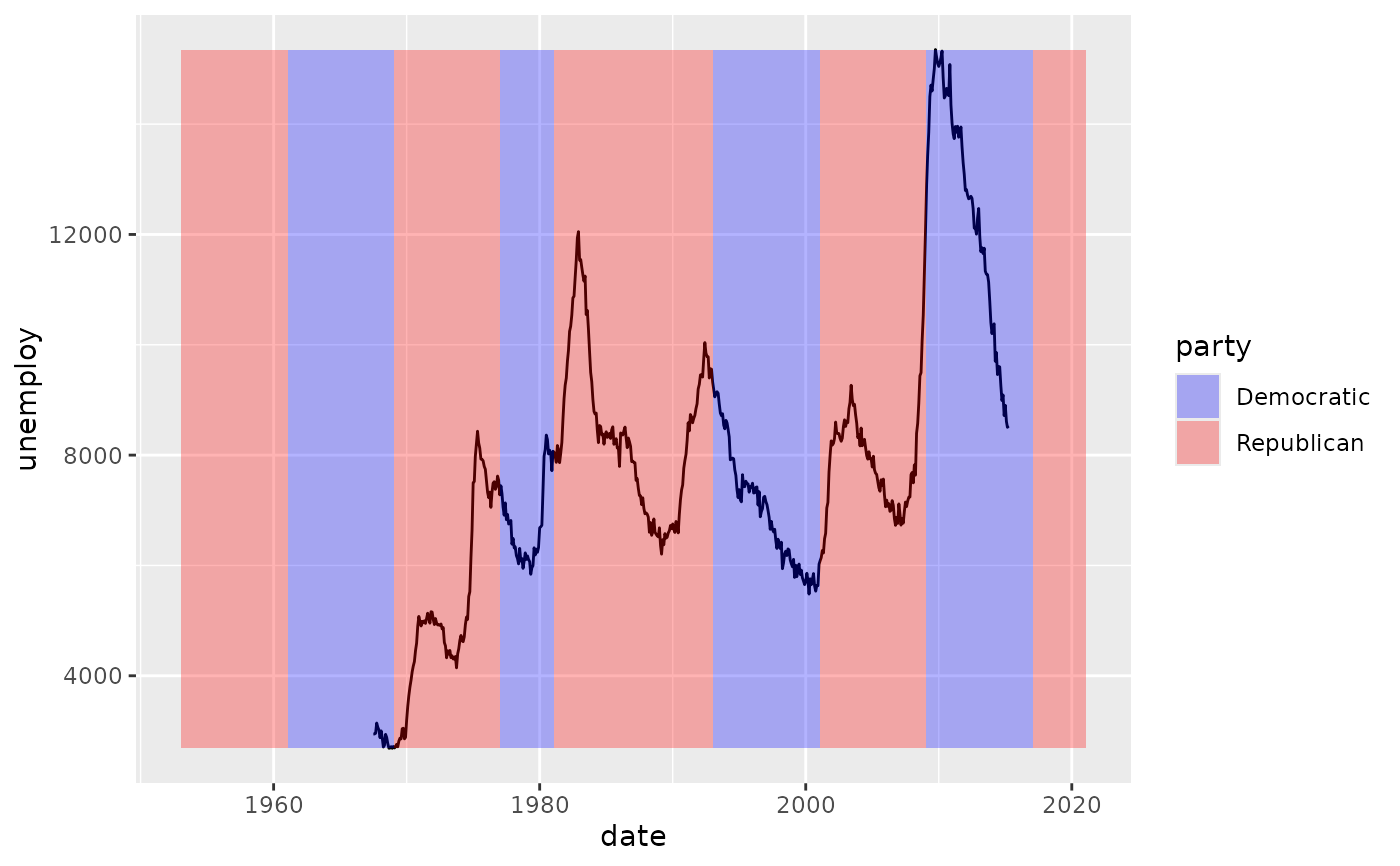 # }
# }